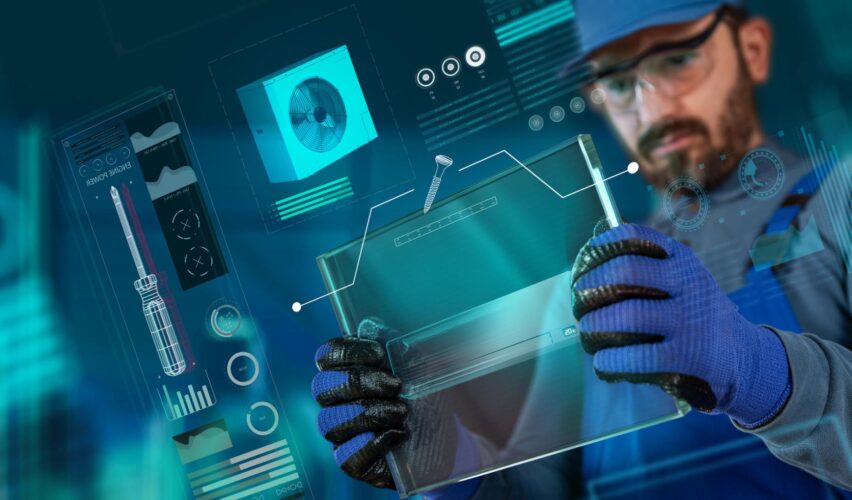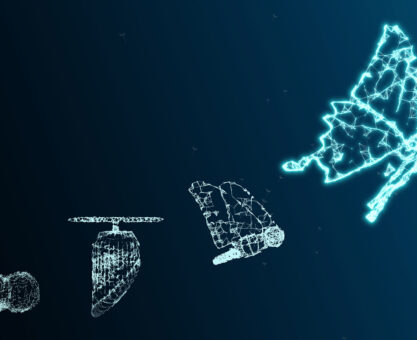We often hear the phrase, ‘you cannot account for human error’ but that seems illogical in today’s connected world. We have the technology to not just account for human error but to eradicate it.
The Internet of Things with the proliferation of affordable and reliable sensors is changing the way in which we can view, manage, service and support technology, processes and any physical object. By mirroring a process, product or service into a virtual world, we can create environments in which machines can automatically analyse performance, warn of impending issues, identify existing or potential errors and even suggest part upgrades or changes to procedures to make them more efficient.
[quote float=”left”]Digital twin eliminates guesswork from determining the best course of action to service critical physical assets, from engines to power turbines.[/quote]This is the digital twin idea. As a concept, it’s been around for a while (NASA used it on early space missions) but the emergence of IoT has made it a commercial reality. Digital twin eliminates guesswork from determining the best course of action to service critical physical assets, from engines to power turbines.
Easy access to this combination of deep knowledge and intelligence about your assets paves the road to wider optimisation and business transformation.
Digital twin technology spans across all industries where the value is in assets and more generally complex systems. Its ability to deliver early warnings, predictions, and optimisation is fairly universal. In time, I think we’ll see the concept of a digital twin to be applied to human beings as well, playing a significant role in healthcare.
However just mirroring is not enough. If the aim is to achieve zero downtime or at the very least, overall insight into on-going product and process performance, the digital twin has to be analysed and that analysis has to feed other functions.
What the digital twin produces, when bundling data with intelligence, is a view of each asset’s history and its potential future performance.
This continuum of information leads to early warnings, predictions, ideas for optimisation, and most importantly a plan of action to keep assets in service longer will, sending commands to machines in response to those forecasts.
If you close the loop, with data and predictions, you can act directly on the asset itself.
In other words, if you close the loop, with data and predictions, you can act directly on the asset itself. That’s where Asset Performance Management and Field Service Management are changing the way service operations run.
By combining APM with FSM tools, the digital twin idea is transformed into an intelligent agent. Businesses have, for the first time, a complete suite of intelligence at their fingertips, to understand potential equipment issues, and pre-empt them or act upon them quickly and efficiently with the correct tools and parts, should machinery need fixing.
This means field service is managed more efficiently, reducing costs and ensuring minimum downtime as engineers attend jobs with a full understanding of the problem, the right parts to hand and a complete knowledge of how to fix it.
This is the shift from an often blind and reactive approach to fixing broken products and services to a predictive model that should eliminate waste, reduce costs, downtime and importantly human error.
This sort of knowledge is gold dust for product designers and manufacturers as it can feed back accurately, which parts work well and where machines would need improving or upgrading.
The digital twin idea has additional benefits too, as it can use historical data and current data to provide a complete picture of a particular asset, its past performance, what it should be achieving now and its likely end of life date, when it would be predicted to be less efficient.
This sort of knowledge is gold dust for product designers and manufacturers as it can feed back accurately, which parts work well and where machines would need improving or upgrading.
Combined with the knowledge of field service professionals this makes for a powerful tool for upselling products and services to customers. Any new ideas or enhancements can be fully supported with data analysis and perhaps even simulations to illustrate how new parts and functions would improve performance.
It offers justification and also accountability and should cut through irrelevant or unsuitable product or service ideas.
It’s transforming service at the edge by bringing together all the facets that make businesses and machines tick – and goes a long way to creating a world of zero unplanned downtime.






